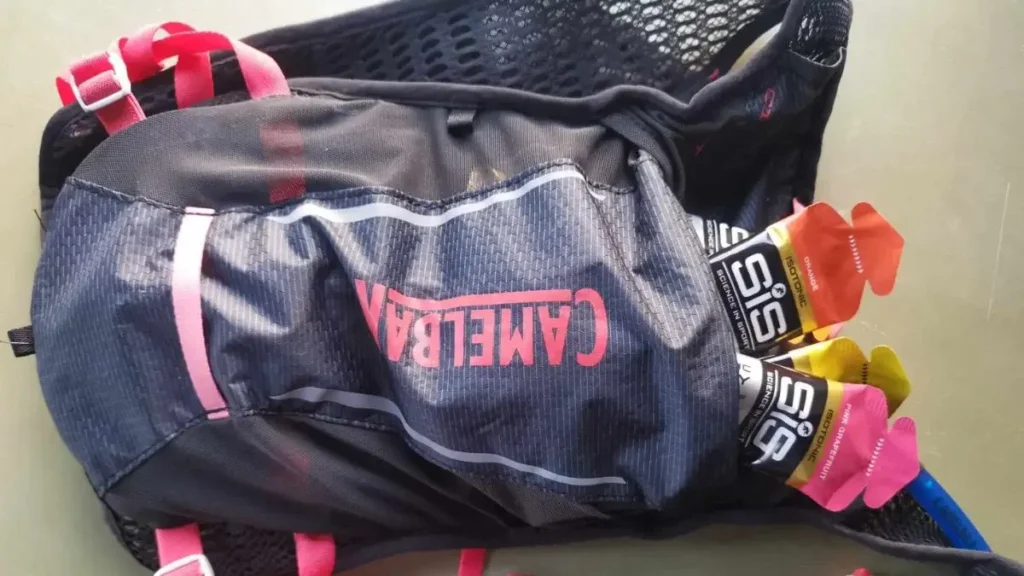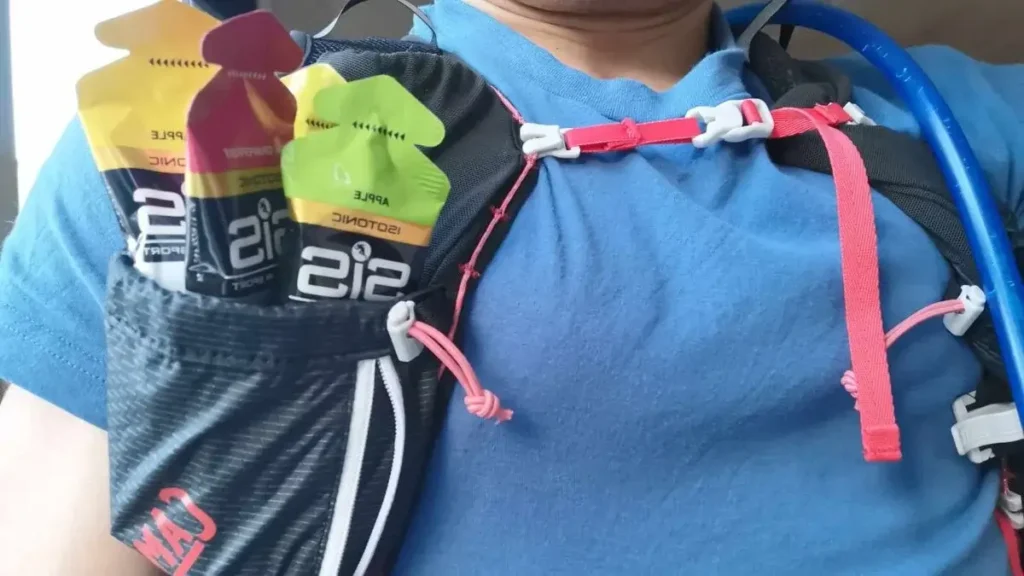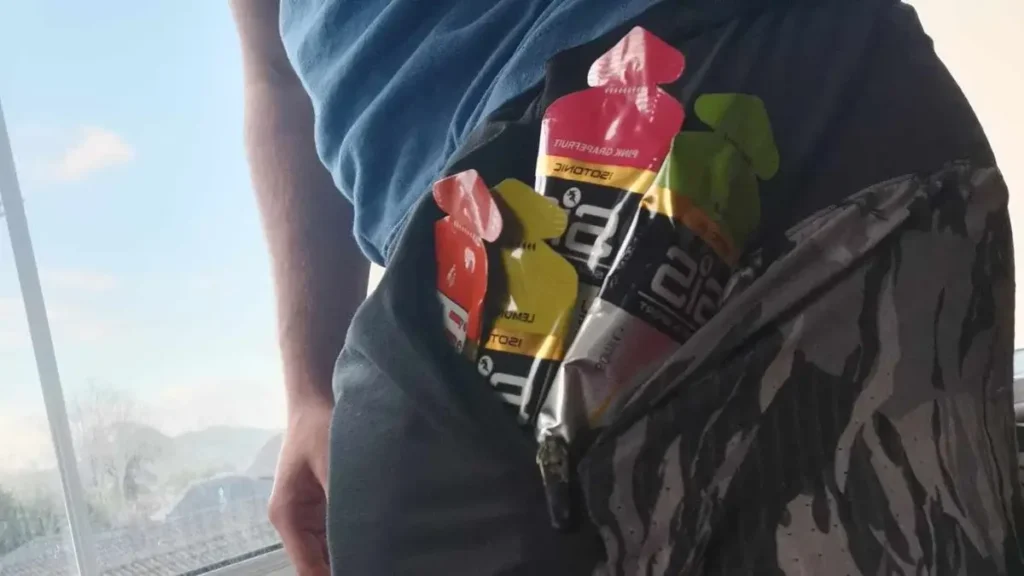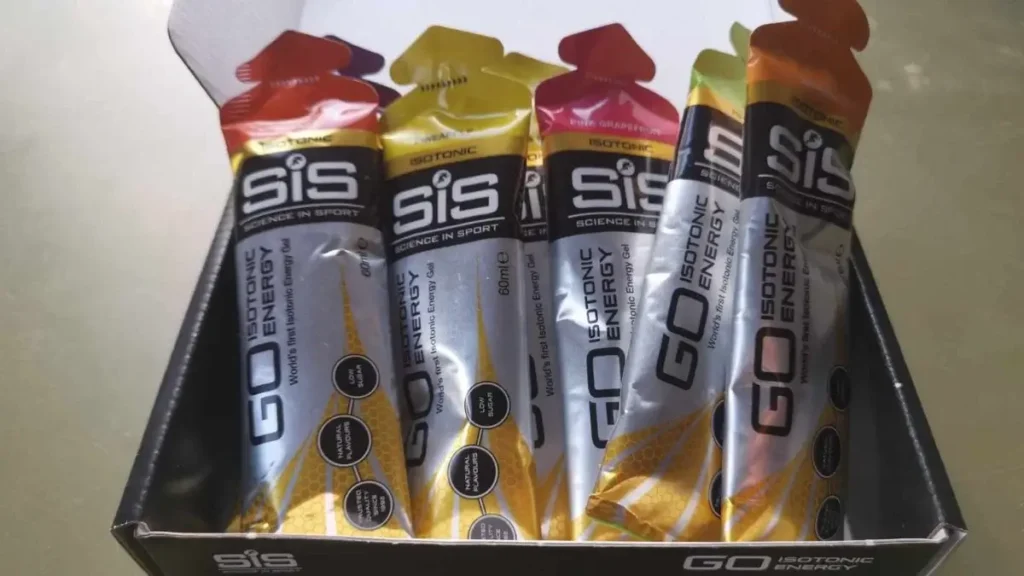I can’t state enough how much fueling properly can completely change your race day. Get it wrong, and you’ll cramp up halfway around, get it right and you’ll forget you were even meant to ‘hit the wall ‘ at some point.
But now you’ve got your hands on those all-important sachets, where are you meant to put them?
If you’d like to learn your options on how to carry gels during a marathon beyond holding them in your hands and hoping they don’t burst, read on, I’ve got you covered.
What are your options?
The 3 best choices are:
Which is best for you will depend on several factors, like running distance (marathon/training), affordability, body shape, and personal preference. Let’s break them down.
Pros and Cons
Vest and Hydration Pack


The upper body solution, vests and packs usually contain two storage options for gels:
Out of these two options, it really comes down to preference, however, there are some important points to consider.
If you store your gels in the backpack, you’ll have to stop running to get them out. Some runners might see this as a bonus, but I find it difficult to get going again after a stop, so try to keep stopping to a minimum. Because of this, I’d opt to keep them in the front pockets.


One downside of storing things in the front pockets is it bulks them out, and I’ve personally found that as my arm swings as I run, my bicep can rub against the full pocket, causing chafing. I’ve found it not to be too bad, as long as I put Vaseline or other anti-chafing gel on my upper arm at the start of a run.
If you’re looking to buy a vest or hydration pack, you want to make sure that the pockets on the front have a pull string to close them. Without them, your gels and anything else you store will fall out of the top as you bounce as you run.
Vest or Hydration Pack?
If you can afford the extra for a hydration pack, that would definitely be my choice as you’re getting the best of both worlds.
It gives you all the water capacity you need for your longer training runs (3/4 hours), but you’ve also got the option to take the water holder out and just use it as a normal vest. In terms of cost, there is usually not that much in it.
READ MORE: 40 Marathon Race Sign Ideas – Funny, Motivational, Flirty
Short Pockets
The simplest of the 3 options, some people prefer to just use their short pockets.


This is the cheapest option, as it means you don’t have to go out and buy another piece of running kit, however, there are a few things to be careful of.
Like the pull strings on the vest pockets, it’s really important to make sure your running shorts have zips. Otherwise, you’ll not make it out the door, never mind the start line, without your gels falling out.
The other issue is storage space. You’ll need to be able to carry anywhere from 6 to 12 gels, depending on how fast you run, and even if you use both pockets they still might not fit (I know they wouldn’t in my Nike trail shorts).
I’ve personally found that if I store too many gels in my short pockets, the corners of the foil packets are quite sharp and dig into my legs which can be quite uncomfortable. My opinion is if you’re going for a shorter run and only need to carry 1 or 2, short pockets are a good option, but if you’re running a marathon you need to consider the other 2 options.
Race Waistbelt or Pack
If you’re finding that having a pack wrapped around your torso is uncomfortable, then a storage device around your waist is the better option.
These come in 2 types:
They also come with a number of other features depending on the brand, like loops to hang additional clothing off, and display ports to show your race number.
Even the smallest of good race belts will have plenty of storage space to store your gels come marathon day. I have found that if you store your gels in the back pocket, you can get one out while you’re running without much difficulty, however, the other gels tend to fall out and only find out when you’re late into the race reaching for your last one and it’s not there. Because of this, I’d always recommend storing them in the front, or, if that isn’t an option, stopping to get them out.
As with the vests, whether they will work for you depends on how comfortable you find them and what I like to call ‘the bounce factor’. You want to make sure you buy one that has a good adjustment system so you can wear it tightly to reduce bounce but that is also made of quality material so that it doesn’t rub. If it’s jumping all over the place as you run, it will make your marathon incredibly unfun, so getting this right is important.
If you’re a slightly larger runner with a bit of a belly (no shame here), you may find your belly rubs on the top of your belt. Here I’d recommend giving the belt a miss and trying a vest instead.
Which is the best for you?
Research will only get you so far. It’s time to get some hands-on experience and complete some training runs trialing the different options to work out which works best for you personally.
My personal preference is a hydration pack, I use the Camelbak Circuit™ Vest 5L with 1.5L Reservoir. I store all of my gels in the right front pocket, which leaves the left pocket for a Lucazade if they aren’t provided at the marathon or on a training run.
Vests are the most popular option for beginners and intermediates. Belts are more popular among the ultramarathon running community.
If you’re on a budget, using a pair of running shorts is going to be the cheapest option, however, you can pick simple vests quite cheaply, and I’d say they are definitely worth the investment.
But, whatever you do, PLEASE PLEASE PLEASE don’t try your choice for the first time on marathon day. If it’s not right for you and it chaffs, it’s going to be a miserable day. Have a go during a training run first.
My Top Tips
- Organize your gels for easy access (make sure they are on top and the flavors are in order).
- Stack your gels uniformly to prevent bouncing and chafing.
- Try and coincide eating your gels with water stations so you can wash them down if you’re not a fan of the aftertaste.


Row Brown is the founder of Refresh Row. He is a keen marathon runner, his favorite being the London Marathon. He’s now set himself the mission of Running the Entire Length of Spain, which is scheduled for late 2024.



